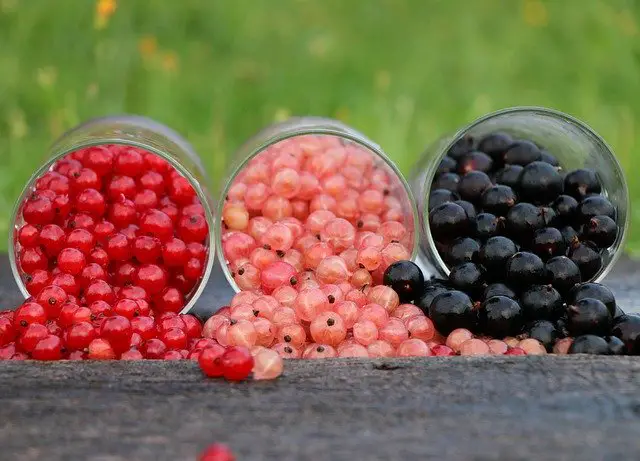If you’re anything like me, by the end of January you can’t wait to start the growing season off again. Well this post will give you all the information you need to get srated as soon as the calendar turns. So let’s have a look at what to grow in February.
What to Grow in February
If you have the luxury of a greenhouse, even a unheated greenhouse, there’s a wide range of plants you can grow in February. If you don’t have a greenhouse then your options are slightly more limited but don’t despair. There are many ways to get a jump on nature.
The easiest way for me to do this is to set things out into different categories. So if a particular section doesn’t apply to you, just jump forward to the bits that do.
What to Grow in The Greenhouse (or Indoors) in February
Let’s start with vegetables…
Vegetables to Grow in The Greenhouse (or Indoors) in February

- Aubergines (egg plants) sow seeds in mid February for growing on through the summer.
- Asparagus Start asparagus seeds off in February to give them a nice long growing season.
- Basil This herb can be started on an indoor window sill or an unheated greenhouse.
- Brassicas Particularly cauliflowers, calabrese, brussel sprouts, and summer cabbage.
- Cucumbers Definitely need warmth to get cues started, but once germinated a greenhouse should provide enough protection from frost (as long as it’s not too cold).
- Celeriac Sow seeds now to ensure a long growing season (necessary for larger heads).
- Celery Try bolt resistant varieties for early results.
- Globe Artichokes Start indoors now for transplanting later on in the season.
- Leeks Can take a long time to swell, so it’s good to get them started early.
- Onions Growing onions from seed gives you a much larger range of varieties than growing sets.
- Parsley Get parsley started in February and benefit from early pickings.
- Peas Grow peas either in upcycled guttering, or in cardboard pots to avoid disturbing the roots at transplant time.
- Peppers and Chillis Get them started now to ensure a nice long growing season.
- Potatoes Start chitting your early potatoes now in order for them to be ready to plant out in around 6 weeks.
Vegetables to Grow in a cold Frame or Cloche in February

- Beetroot Sow under cover if you have sandy soil and live in a mild temperate area. If not wait until the soil has warmed up.
- Carrots Sow early varieties now for a late Spring harvest.
- Chicory Sow seeds now under cover now to harvest in early Summer.
- Lettuce Once the temperature gets hot lettuce will bolt, so start them off now for a Spring crop. Succession sowing is the key here to maintain a regular supply.
- Peas There are varieties of pea that can be direct sown under cover now, for an early picking.
- Parsnips These root vegetables can take a while to germinate, and I find it best to sow them in March/April but depending where you are you can get results from February sowings.
- Radish Another crop that doesn’t like it too hot, radish take roughly 6 weeks from seed to table, unless it’s very cold, if so wait a week or so.
- Spinach February is the time to get spinach started for an early, healthy crop in Spring. Be aware that spinach is prone to bolt in hot conditions.
- Spring Onions Get some early spring onions going now for a harvest in about 12-14 weeks.
Vegetables to Grow Outdoors in February

- Broad Beans As long as the ground isn’t frozen or waterlogged, now’s the time to sow some hardy broad beans.
- Garlic Plant cloves of garlic in light soils that are not frozen or waterlogged, heavy, clay type soils will need an extra month at least.
- Jerusalem Artichokes (Sunchokes) Plant tubers directly into the soil now. Be warned once grown you’ll always have them.
- Shallots The same applies for shallots as for garlic, only in light soils that are not frozen or waterlogged.
Now onto fruits that can be planted in February, remember only if the ground has warmed up sufficiently, and isn’t waterlogged.
Fruits That Can be Planted in February

- Blackberries
- Blackcurrants
- Gooseberries
- Raspberries
- Redcurrants
- Strawberry plants These should be replaced every 3 years or so, to maintain a good supply of large fruits. Try rooting your own strawberry runners.
All the following fruit trees can be planted-bare rooted whilst they are still in dormancy without causing them any problems. Just remember they are likely to need extra watering in their first season.

- Apricots
- Apples
- Nectarines
- Peaches
- Pears
Other Types of Fruit to Plant in February

- Rhubarb Crowns can be planted now as long as the ground isn’t frozen or too wet. To give rhubarb a chance, it shouldn’t be picked at all in it’s first year. And then only lightly in year two.

